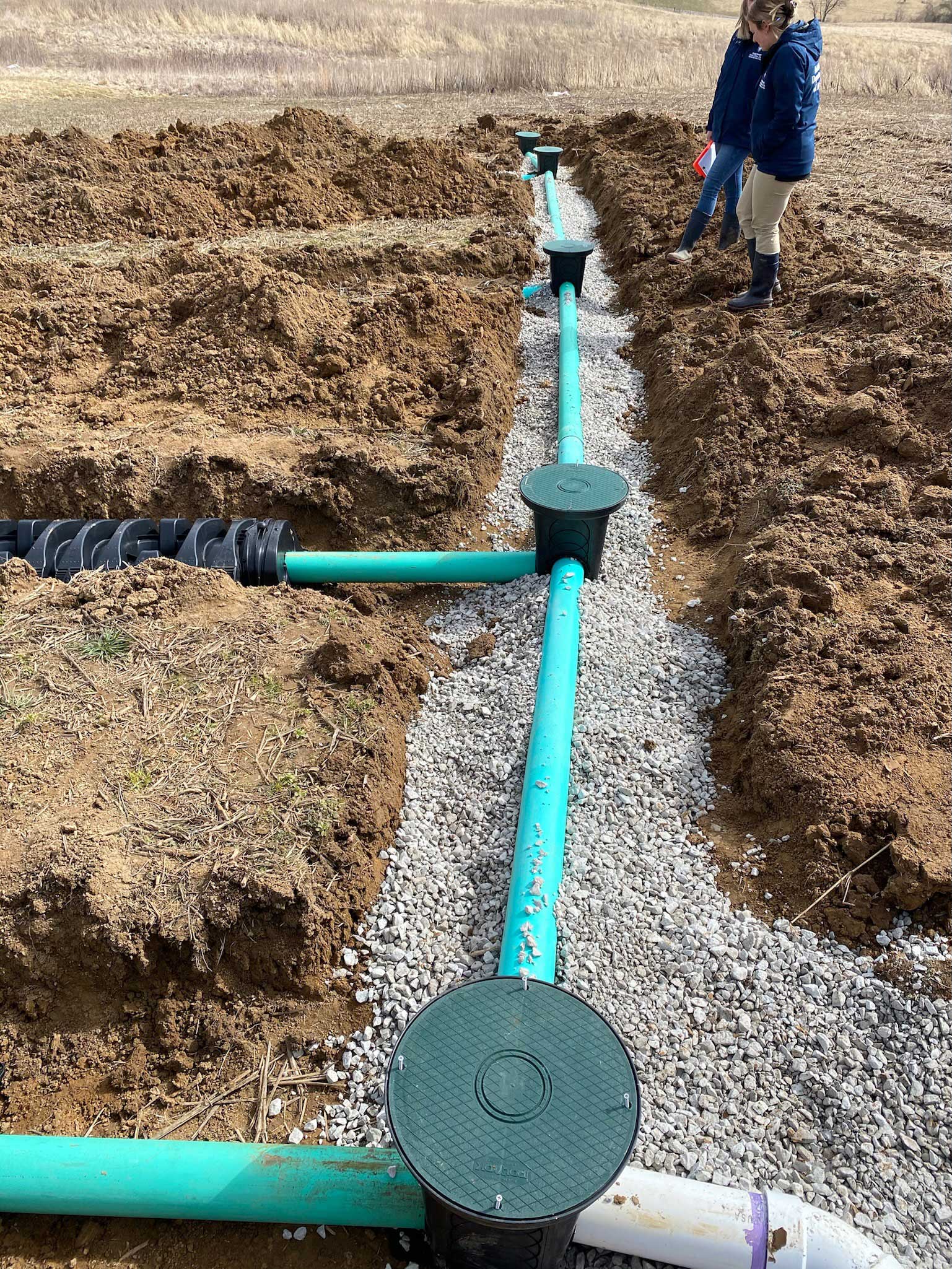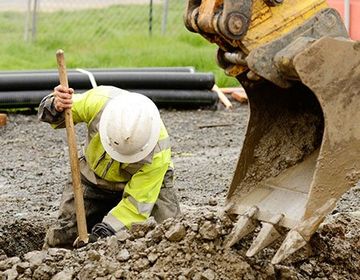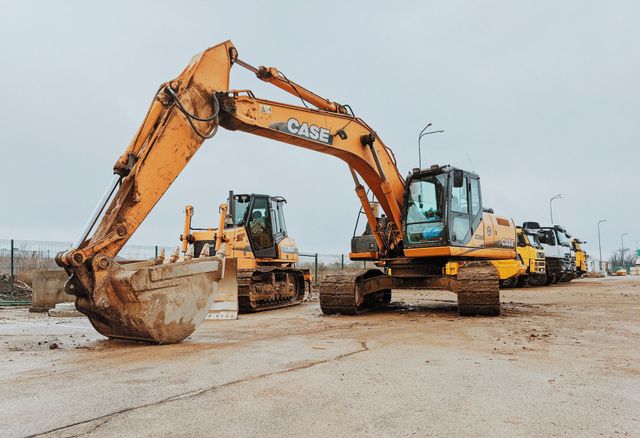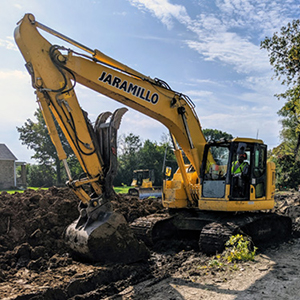Lancaster Excavation - Professional Excavation Solutions in Lancaster, OH
Lancaster Excavation - Professional Excavation Solutions in Lancaster, OH
Blog Article
Extensive Expedition: The Scientific Research Behind Superior Excavation Practices
From old hand devices to contemporary hydraulic excavators, the advancement of excavation methods has been a testament to human ingenuity and technological improvements. What really sets premium excavation methods apart is a deep understanding of geological principles, paired with the use of cutting-edge tools and methodologies.
Evolution of Excavation Methods
Throughout history, the evolution of excavation methods has played an essential duty in advancing construction techniques and archaeological discoveries. From the fundamental devices utilized by our forefathers to the sophisticated machinery employed in modern-day times, the development of excavation methods has actually dramatically changed just how we approach different jobs.
In old times, manual labor with standard devices such as wheelbarrows, pickaxes, and shovels was the key technique of excavation. This labor-intensive process limited the deepness and scope of excavations, usually leading to slow-moving progress and limited accessibility to particular websites. Nevertheless, as people progressed, so did the devices and techniques used for excavation.
The Industrial Revolution marked a turning point in excavation methods with the intro of steam-powered equipment. In contemporary times, innovation plays a crucial role in excavation, with innovations like GPS systems, drones, and 3D scanning boosting precision and performance in the field.
Function of Modern Technology in Excavation

The assimilation of cutting-edge technology has basically revolutionized the field of excavation, improving accuracy and efficiency to unprecedented degrees - excavating ohio. One of the vital technical innovations that has substantially impacted excavation methods is the utilization of GPS systems.
In addition, the advent of 3D modeling and simulation software application has structured the preparation process for excavation projects. Engineers and drivers can currently picture the whole excavation procedure before breaking ground, maximizing and recognizing possible difficulties operations. Together with this, the execution of drones in excavation activities has assisted in airborne studies, volumetric measurements, and site assessments with unequaled rate and accuracy.
Geological Concepts in Excavation
An understanding of geological principles is necessary for ensuring the structural integrity and stability of excavation websites. Geological elements play a critical function in establishing the usefulness and safety of excavation tasks (lancaster excavation). One crucial geological concept to think about is the type of soil or rock existing at the site. Different soil types, such as clay, crushed rock, or sand, have differing degrees of security and call for different excavation methods. For instance, natural dirts like clay may require added support to avoid collapses, while sandy dirts may be susceptible to erosion during excavation.
By conducting complete geological surveys and evaluation, designers and excavators can establish approaches to mitigate risks and make certain the effective conclusion of excavation jobs. Inevitably, including geological principles right into excavation techniques is essential for attaining risk-free, efficient, and sustainable outcomes.

Latest Tools for Excavation
In the realm of excavation methods, modern advancements in devices have actually changed the efficiency and accuracy of excavation procedures. One of the most up to date tools making waves in the market is the usage of drones furnished with innovative imaging innovation. These drones can provide thorough aerial surveys of excavation sites, supplying real-time data on topography and prospective dangers. This info help in better planning and decision-making throughout the excavation procedure.
Another cutting-edge tool getting popularity is the execution of 3D printing modern technology for producing custom-made excavation devices. This enables the production of specialized devices that are customized to the particular demands of a project, enhancing efficiency and lowering downtime.
Furthermore, innovations in products science have resulted in the growth of stronger and more long lasting excavation tools. lancaster trenching. Tungsten carbide-tipped excavator add-ons, as an example, offer exceptional efficiency in difficult ground conditions, boosting efficiency on-site
Scientific research's Effect on Excavation Practices

Furthermore, check my reference scientific study on dirt auto mechanics and geotechnical engineering has supplied important insights into dirt actions, allowing excavation experts to make educated decisions concerning excavation methods and soil stablizing methods. Overall, science continues to drive advancement and improvement in excavation practices, making excavation tasks a lot more reliable, economical, and sustainable.

Final Thought
In conclusion, the advancement of excavation strategies has actually been significantly influenced by developments in innovation and a much deeper understanding of geological concepts. The latest devices and tools utilized in excavation have boosted efficiency and accuracy in the area. The application of clinical understanding has significantly boosted excavation practices, resulting in much more sustainable and reliable methods for digging deep into numerous kinds of products.
In the world of excavation practices, contemporary innovations in devices have changed the efficiency and accuracy of excavation processes. By leveraging clinical principles, the excavation sector has actually been able to dramatically enhance efficiency, accuracy, and security in excavation processes. GPR permits excavation teams to non-invasively check and map subsurface structures, utilities, and potential hazards, allowing them to intend excavation jobs with greater precision and minimized threat of mishaps.
Furthermore, scientific study on soil auto mechanics and geotechnical engineering has offered useful insights into dirt actions, allowing excavation specialists to make educated next decisions concerning excavation methods try this and dirt stablizing strategies. Generally, science continues to drive development and enhancement in excavation methods, making excavation tasks a lot more efficient, affordable, and sustainable.
Report this page